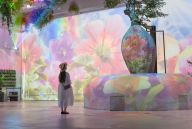Cherry Blossoms, Anyone? Check Out 3 Viewing Spots in Tohoku
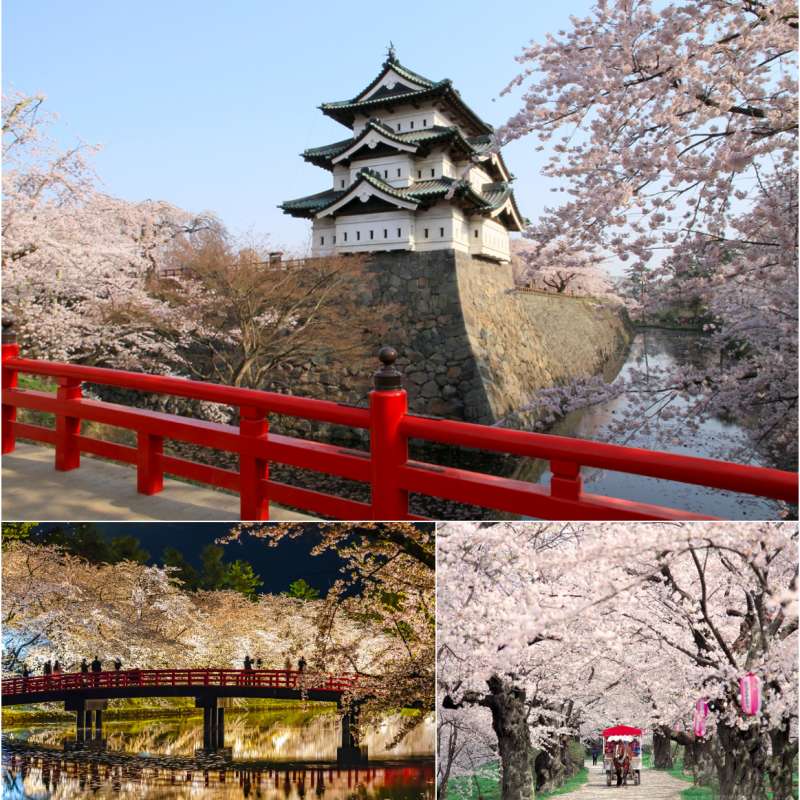
From March to May every year, cherry blossoms bloom in many areas of Japan. Other than the well-known cherry blossom viewing spots such as Ueno Park in Tokyo and Kiyomizudera Temple in Kyoto, there are other famous spots scattered around the country. Let’s focus on the Tohoku area, and introduce some of its top cherry blossom viewing spots, such as Hirosaki Park (Aomori), Kitakami Tenshochi Park (Iwate), and the samurai residence in Kakunodate (Akita). Some spots even hold a cherry blossom festival during the blooming season. Please refer to this article if you visit Japan, especially the Tohoku region in the spring!
Before viewing cherry blossoms in Tohoku:

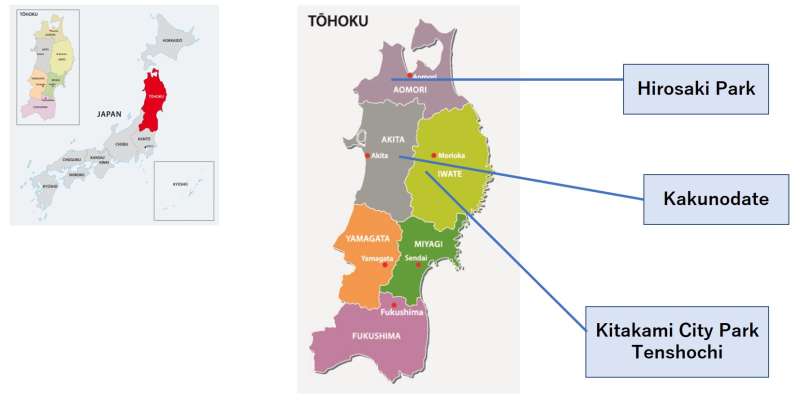
Cherry blossoms in the Tohoku region usually begin to bloom from early to mid-April, and they are in full bloom until early May. The average temperature in April in Sendai City, Miyagi Prefecture, is about 10.1℃. Even though it's spring, it gets cold in the morning and night, so be sure to bring an extra layer of clothing that is easy to put on and take off when you view the cherry blossoms.
Additionally, when you go to the park to see the cherry blossoms, remember to take your trash, such as empty lunch boxes and sweet wrappers, back home with you. It is also considered disrespectful to claim a spot in advance where it is prohibited, or to break a branch from cherry blossom trees. There may be other rules as well, depending on the venue, so please abide by them.
Kitakami Tenshochi Park (Iwate)
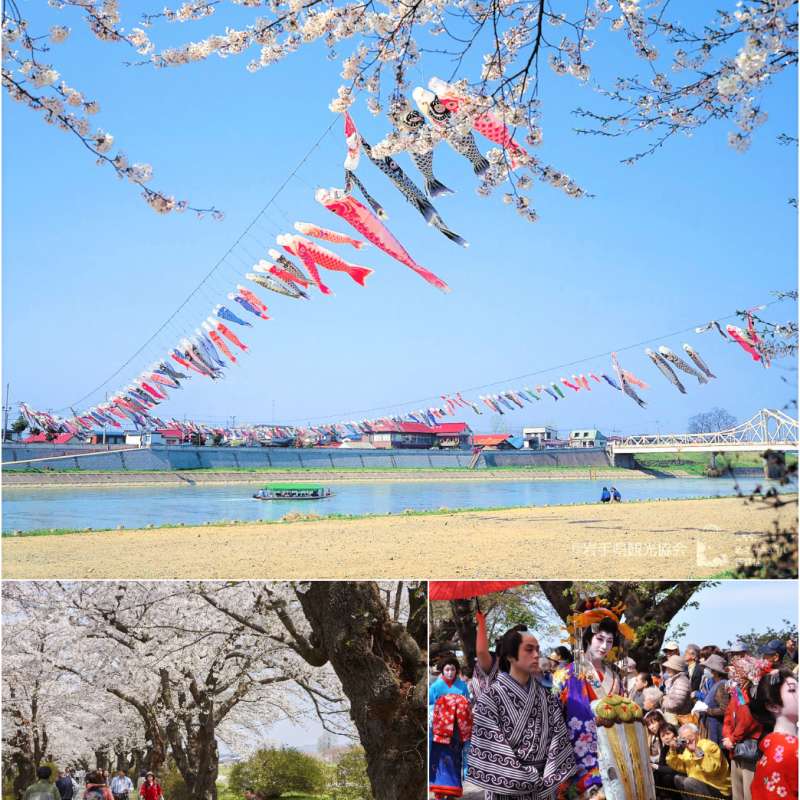
Kitakami Tenshochi Park is located on the banks of the river that runs through Kitakami City in Iwate Prefecture. This is one of the leading cherry blossom viewing spots in Tohoku, and was selected as one of the 100 Best Cherry Blossom Spots in Japan. Rows of cherry blossom trees stretch as long as 2 kilometers from the Sango-bashi Bridge. It is said that there are around 10,000 cherry blossoms of about 150 species in the garden, which covers an area of 293 hectares. Somei Yoshino cherry blossoms are in full bloom around mid-April, and Kasumi-zakura cherry blossoms are in full bloom around early May, so various cherry blossoms can be enjoyed depending on the month you visit. The Kitakami Tenshochi Cherry Blossom Festival, which is held from early to mid-April and from early to mid-May, is absolutely packed with tourists!
Aside from the cherry blossoms in bloom, visitors look forward to the approximately 300 colorful koinobori (carp streamers) fluttering over the Kitakami River. Koinobori is a carp design drawn on paper, cloth, non-woven fabric, and other materials. Flapping in the breeze, these funnel kites or wind socks celebrate the health of young people. Cherry blossoms in bloom paired with the koinobori are best admired on a tourist boat that operates during spring, which allows for a different type of viewing experience. We also recommend sightseeing via horse-drawn carriage to create a nostalgic atmosphere. The cherry blossoms are illuminated at night, so why not take in the beauty of cherry blossoms all day long?

If you go to Iwate Prefecture to see the cherry blossoms, you should definitely try the famous noodle dishes! Morioka Reimen is a cold soup made with beef bones and topped with tough noodles, vegetables, and kimchi. Jajamen is thick, chewy noodles topped with meat miso, cucumber, green onions, and more, and it is eaten while being mixed. Another unique local dish is Wanko soba, a small serving of soba in a bowl that is instantly refilled as soon as you consume it. Please try it out!
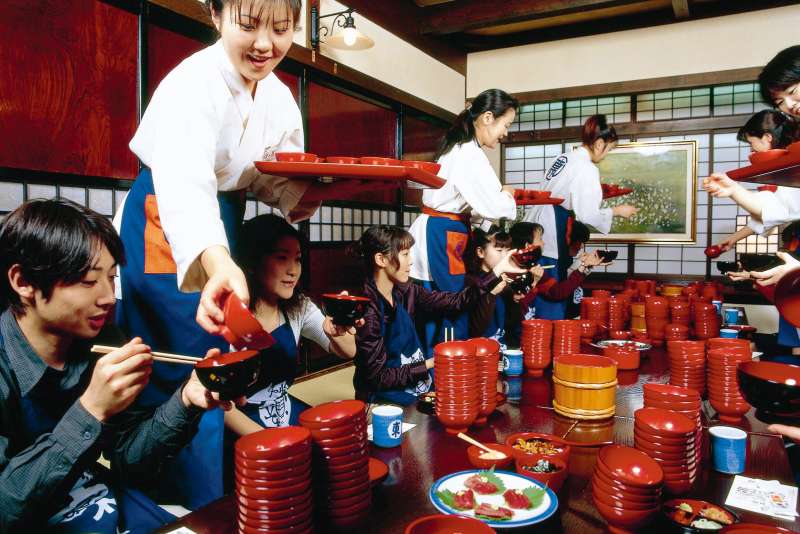
To get there, take the Tohoku Shinkansen from Tokyo Station for about two and a half hours and then get off at Kitakami Station. It is about 20 minutes on foot from Kitakami Station to Sakuranamiki Iriguchi (near Sango-bashi Bridge). Rental bicycles are also available during the cherry blossom viewing season in April. The area around the Sango-bashi Bridge is packed with visitors annually, so avoid driving there. You can also go from JR Kitakami Station to the excursion site by ferry. The ferry runs annually from the riverside on the east side of JR Kitakami Station during the season.
Please check the official website for the latest schedules and information.
Hirosaki Park/ Hirosaki Castle(Aomori)
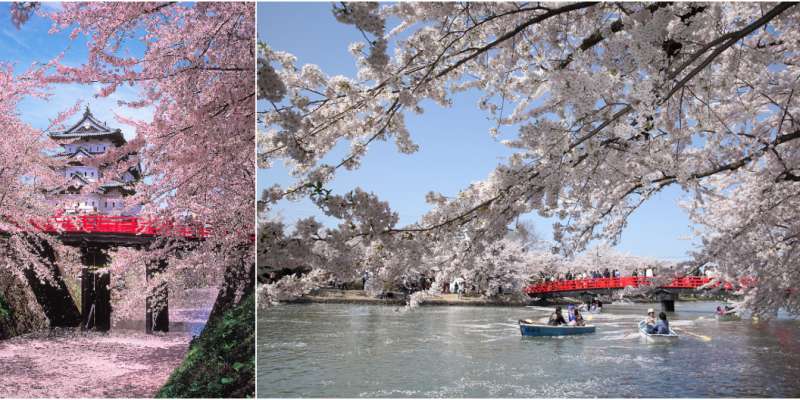
In Hirosaki Park, you’ll find approximately 2,600 cherry trees of 52 species, including the weeping cherry trees (or cherry trees whose branches hang downward) and the Somei Yoshino or Yoshino cherry, the most common cherry tree in Japan. Some of the oldest Yoshino cherry trees (at least a hundred years old) can also be seen in the park.
Hirosaki Park is home to Hirosaki Castle, a castle with a keep built in 1611. When you visit, don’t forget to take shots of the hanaikada―literally a raft of flowers. Picture the castle’s outer moat fully covered with cherry blossom petals. It looks like a pink carpet!
The hanaikada can only be seen a little after the full blooming season. Time your trip so you can see it.
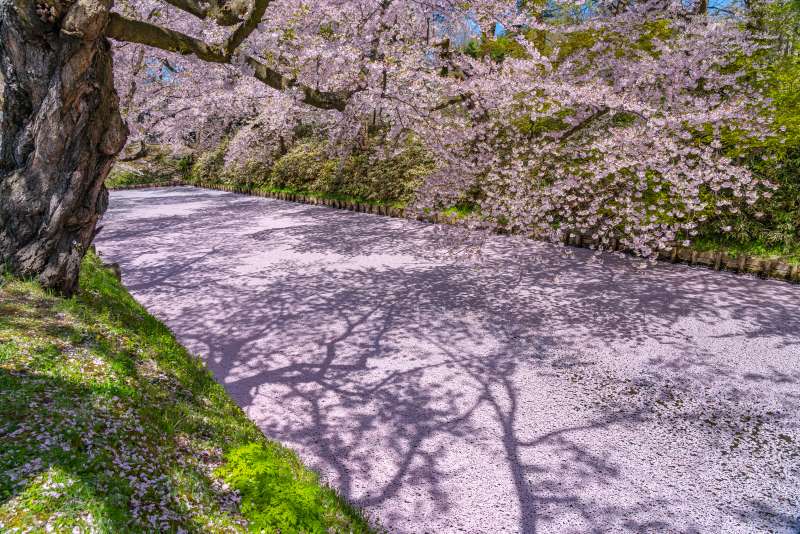
The Hirosaki Cherry Blossom Festival is held annually from late April to early May. During the festival period, there are around 200 food stalls selling local dishes, such as the classic Japanese confectionery dango (a colorful sweet dumpling), strawberry candy, and the well-known black konnyaku (a kind of street food made by pickling square konnyaku in a black sauce) are lined up under the eaves. At night, the park and castle take on a magical atmosphere.
Please check the official website for the latest schedules and information.
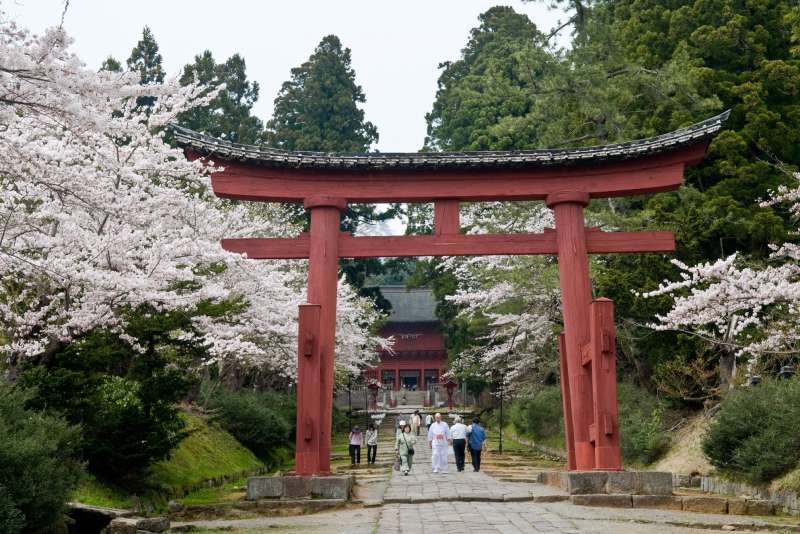
While admiring the cherry blossoms, it is recommended to stop by Iwakiyama Shrine (whose main shrine is designated as an Important Cultural Property of Japan) and Tsugaru-han Neputa Village, which exhibits a huge neputa (giant, lighted lanterns used at the famous Nebuta Festival, held throughout Aomori Prefecture). Hirosaki is also known as a region that produces most of the apples in Japan. If you like sweets, try an apple pie or purchase baked apple desserts as souvenirs!
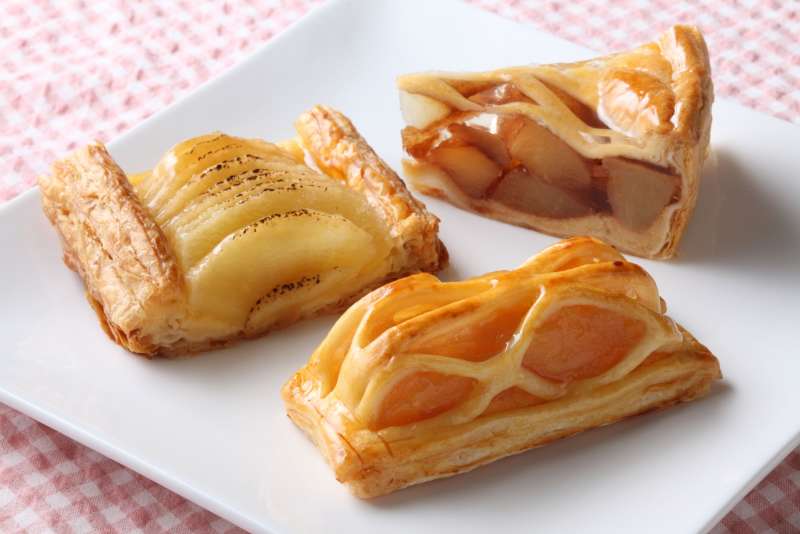
To get there, take the Shinkansen from Tokyo Station to Shin-Aomori Station, then change to the Limited Express Tsugaru for a 30 minute ride before getting off at Hirosaki Station. Hop on the bus from the bus terminal of Hirosaki Station and get off at the bus stop in front of Hirosaki Park.
Samurai District in Kakunodate(Akita)
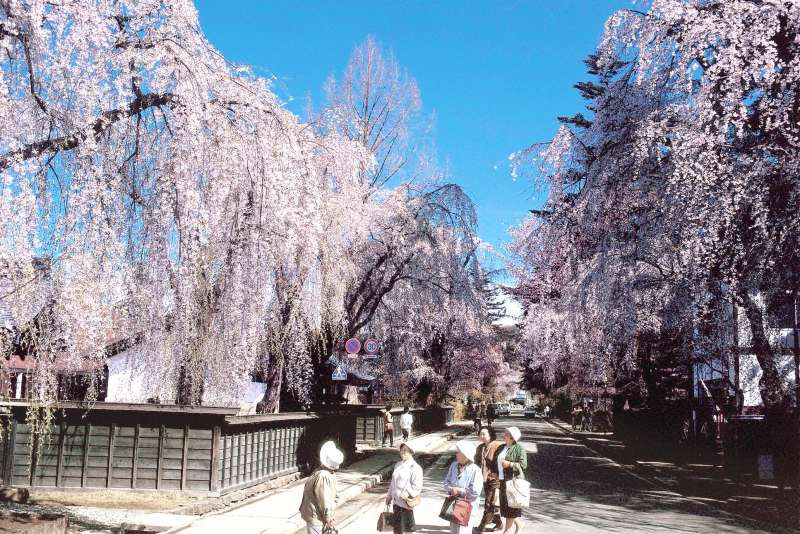
Kakunodate in Akita Prefecture once prospered as a castle town, and is now a popular spot where historical townscapes such as samurai residences still remain. The streets that are lined with samurai residences bloom with fern cherry blossoms during the cherry blossom season.
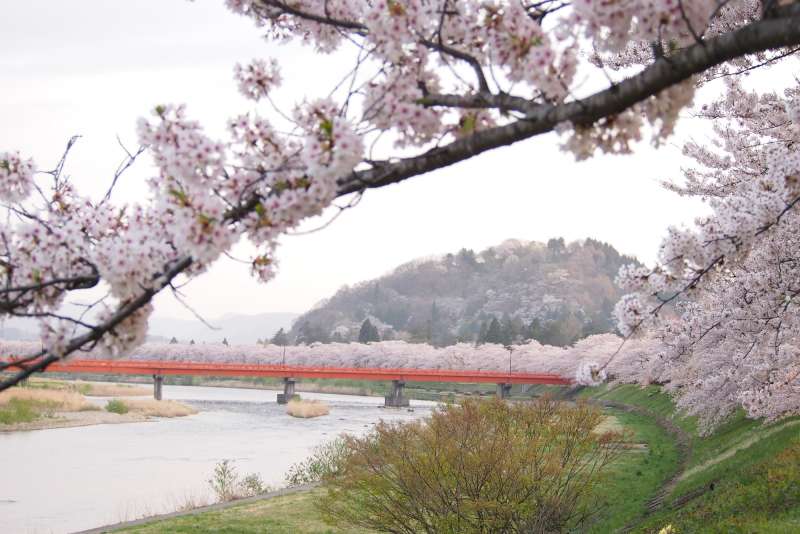
Be sure not to miss the row of cherry blossom trees at Hinokinaigawa Tsutsumi, which is right next to this street!
Approximately 400 Yoshino cherry trees stand along the river, stretching about 2 kilometers. This area has been designated as a National Site of Scenic Beauty. The Sakura Festival is held from April 20 to May 5 annually. (Please check the official website for the latest schedules and information.)
When it comes to sightseeing in Kakunodate, checking out the samurai residences first comes to mind. Direct descendants continue to live in the one and only Ishiguro House in this area, and you can tour the inside of the building. Meanwhile, at the Aoyagi House, you can tour of the armory and museum, and have a meal at a teahouse or restaurant. To get there, take the Shinkansen from Tokyo for about 4 hours, get off at JR Kakunodate Station, then walk for around 15 minutes.
Refer to the following for more information on the facilities mentioned in this article.
https://www.japan.travel/en/destinations/tohoku/
https://www.tohokukanko.jp/en/index.html
About sightseeing spots and passes in Tohoku
Recommended animal spots in Tohoku for families with children
https://www.japan.travel/en/my/little-splurge-travel-2/recommended-animal-spots-tohoku-families-children/
A Prefect Pass to get around Hokkaido and Tohoku!The JR Tohoku-South Hokkaido Rail Pass
https://www.japan.travel/en/my/enjoy-smart-trip-travel-passes/prefect-pass-get-around-hokkaido-and-tohoku-jr-tohoku-south-hokk/
Michinoku Sakura
https://michinokusakura.com/index-en/
Kitakami Tenshochi Park
https://visitiwate.com/article/4713?redir
Hirosaki Park
https://www.hirosakipark.jp/en/
Kakunodate
https://tazawako-kakunodate.com/en/















































